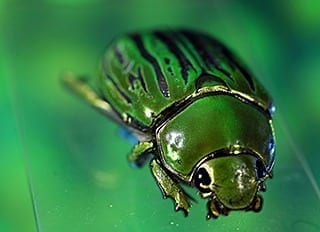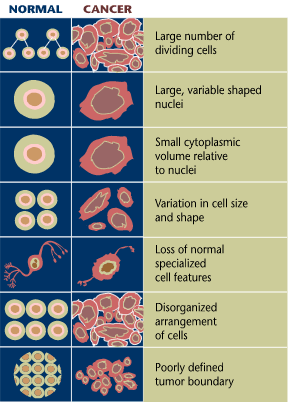
A new generation of neural network models — called spiking neural networks
For every thought or behavior, the brain erupts in a riot of activity, as thousands of cells communicate via electrical and chemical signals. Each nerve cell influences others within an intricate, interconnected neural network. And connections between brain cells change over time in response to our environment.
Despite supercomputer advances, the human brain remains the most flexible, efficient information processing device in the world. Its exceptional performance inspires researchers to study and imitate it as an ideal of computing power.
Artificial neural networks
Computer models built to replicate how the brain processes, memorizes and/or retrieves information are called artificial neural networks. For decades, engineers and computer scientists have used artificial neural networks as an effective tool in many real-world problems involving tasks such as classification, estimation and control.
However, artificial neural networks do not take into consideration some of the basic characteristics of the human brain such as signal transmission delays between neurons, membrane potentials and synaptic currents.
A new generation of neural network models — called spiking neural networks — are designed to better model the dynamics of the brain, where neurons initiate signals to other neurons in their networks with a rapid spike in cell voltage. In modeling biological neurons, spiking neural networks may have the potential to mimick brain activities in simulations, enabling researchers to investigate neural networks in a biological context.
With funding from the National Science Foundation, Silvia Ferrari of the Laboratory for Intelligent Systems and Controls at Duke University uses a new variation of spiking neural networks to better replicate the behavioral learning processes of mammalian brains.
Behavioral learning involves the use of sensory feedback, such as vision, touch and sound, to improve motor performance and enable people to respond and quickly adapt to their changing environment.
“Although existing engineering systems are very effective at controlling dynamics, they are not yet capable of handling unpredicted damages and failures handled by biological brains,” Ferrari said.
How to teach an artificial brain
Ferrari’s team is applying the spiking neural network model of learning on the fly to complex, critical engineering systems, such as aircraft and power plants, with the goal of making them safer, more cost-efficient and easier to operate.
The team has constructed an algorithm that teaches spiking neural networks which information is relevant and how important each factor is to the overall goal. Using computer simulations, they’ve demonstrated the algorithm on aircraft flight control and robot navigation.
They started, however, with an insect.
The Latest on: Spiking neural network
[google_news title=”” keyword=”Spiking neural network” num_posts=”10″ blurb_length=”0″ show_thumb=”left”]
via Google News
The Latest on: Spiking neural network
- Sandia Pushes The Neuromorphic AI Envelope With Hala Point “Supercomputer”on April 25, 2024 at 6:20 pm
Not many devices in the datacenter have been etched with the Intel 4 process, which is the chip maker’s spin on 7 nanometer extreme ultraviolet immersion ...
- Intel builds world’s largest neuromorphic systemon April 22, 2024 at 2:03 am
Intel has announced that it has built the world's largest neuromorphic system.
- Intel unveils brain-inspired neuromorphic chip system for more energy-efficient AI workloadson April 17, 2024 at 10:23 am
With Hala Point, Intel says, it has built the first large-scale neuromorphic chip system that can demonstrate “state-of-the-art” computational efficiencies on mainstream AI workloads.
- Intel Builds World’s Largest Neuromorphic System to Enable More Sustainable AIon April 17, 2024 at 9:23 am
Hala Point, the world’s largest and Intel’s most advanced neuromorphic system to date, contains 1.15 billion neurons and packages 1,152 Loihi 2 processors produced on Intel 4 ...
- Intel unveils Hala Point, its second-generation neuromorphic computing systemon April 17, 2024 at 8:00 am
Intel unveils Hala Point, a large neuromorphic system using Loihi 2 processors and 1.15 billion neurons to develop future brain-inspired AI.
- Advancing brain-inspired computing with hybrid neural networkson April 10, 2024 at 1:13 pm
As a representative research paradigm driven by dual-brain principles, HNN seamlessly combines the neuroscience-oriented Spiking Neural Networks (SNNs) and the computer science-oriented Artificial ...
- RFI Detection with Spiking Neural Networkson April 3, 2024 at 5:00 pm
Spiking Neural Networks (SNNs), inspired by biological systems, are well-suited for processing spatio-temporal data. This study introduces the first exploratory application of SNNs to an astronomical ...
- Brain-inspired chaotic spiking backpropagationon March 29, 2024 at 11:17 am
However, modern learning algorithms for artificial neural networks, particularly spiking neural networks (SNNs) that closely resemble the brain, have not effectively capitalized on this feature.
- Spiking Neural Networks: Hardware & Algorithm Developmentson April 17, 2023 at 5:00 pm
A new technical paper titled “Exploring Neuromorphic Computing Based on Spiking Neural Networks: Algorithms to Hardware” was published by researchers at Purdue University, Pennsylvania State ...
via Bing News









